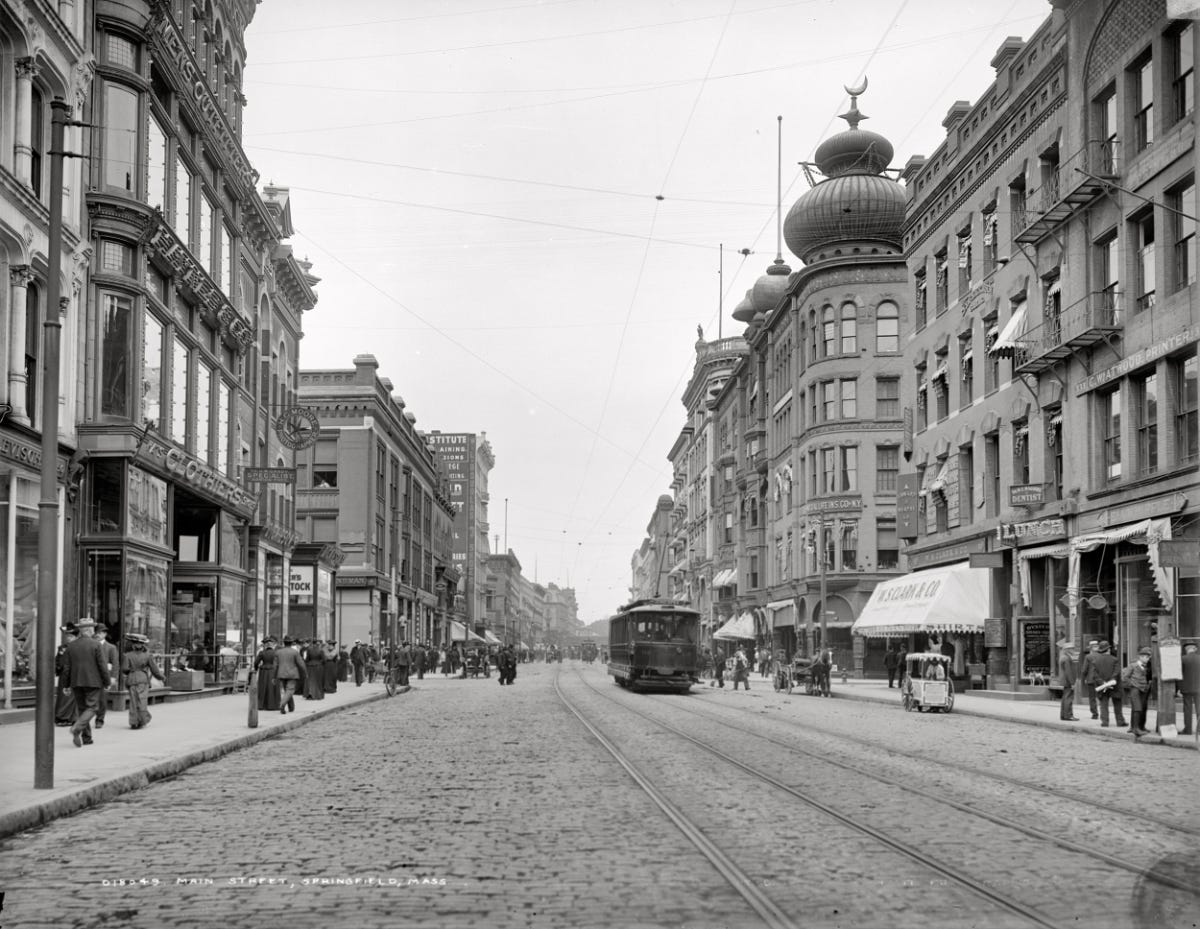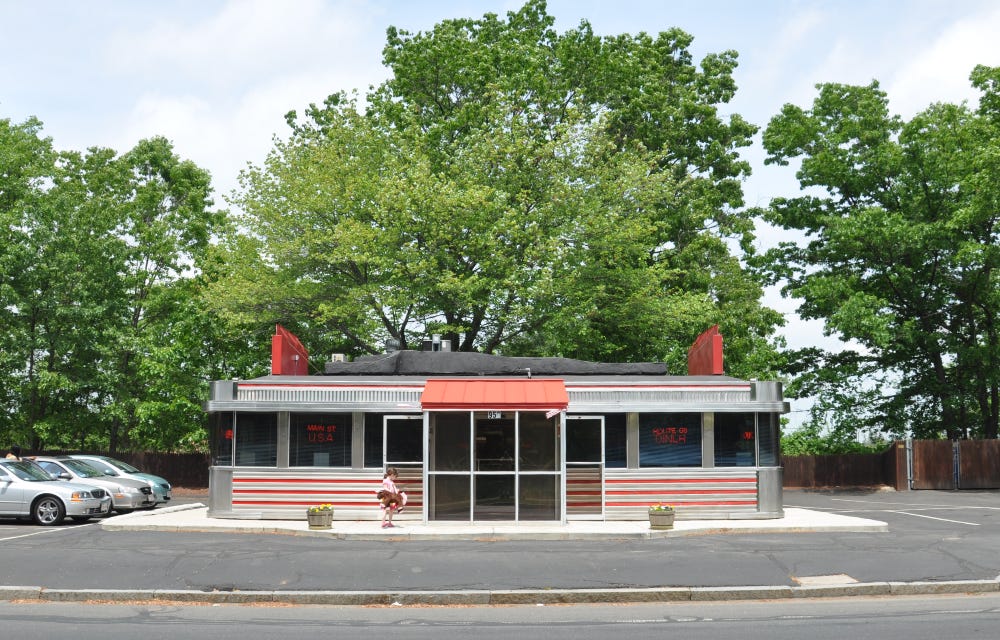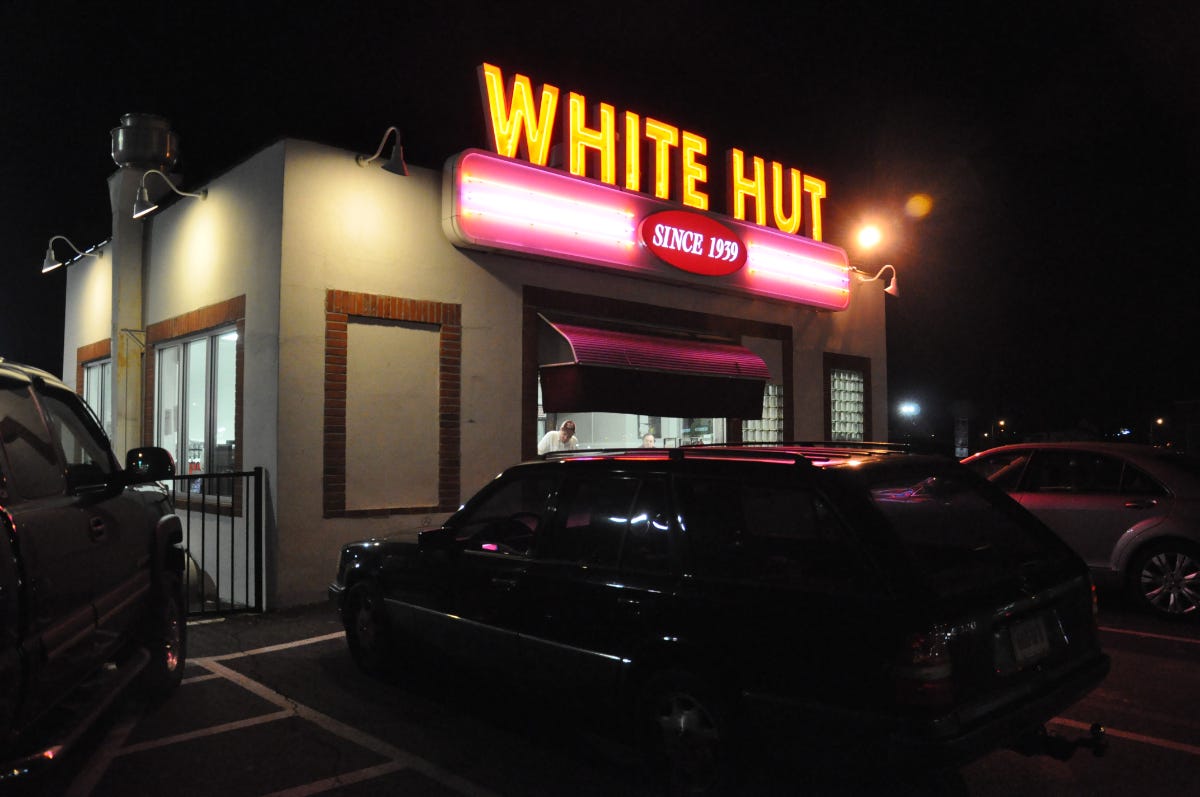A Too-Simple Plan to Save Our Cities
Our cities have been in decline for 60 years. It’s time for a new approach. Let's start with my hometown.
Nick Johnson has a YouTube channel exploring different regions and cities of the country on behalf of his clients looking for a place to live. It sounds like a sweet gig if it actually pays. The videos I’ve seen so far show streetscapes in locales Nick tours in his car. He narrates with facts, figures, and personal opinions. Having seen only two of his videos, I’m not sure he ever gets out of the car.
I mention this because his latest video hit home — in a sense literally. He declared my hometown, Springfield, Massachusetts, the most dangerous city in Massachusetts. Yes, the heyday of basketball’s birthplace is long passed. I moved away for good in 1984, but my mother continued living there until her death in 2012, so I kept up on things.
I take no offense from this video, because once I left I never wanted to move back. I can’t recommend Springfield for anyone looking for a safe place to live or a good school system. It’s not the same city where I grew up. I could have moved back after my mother died and got a decent house for a bargain price. But then I’d be living in Springfield.
Nick makes a number of assumptions, some true, some not quite so true, and a guest resident joins him for more discussion while the street tour serves as the backdrop. Most, if not all the streets over which he drives lie within some of the city’s worst neighborhoods. It has too many of those, but it does have some good ones as well.
The story of Springfield is interchangeable with almost every rust belt city with a population over 50,000. Nick repeats most of the plot points. They all had core industries that put them on the map, and then about 1960, they all reached a tipping point of population and economic decline.
The Springfield Version
For as long as I can remember, I loved cities. I became a vocal advocate for their preservation. I readily bought into the idea of reviving them as part of our walkable communities ethos. Cities, large and small, generated great wealth for the country for much of our history. They were and still are engines of innovation and jewels in the crown of civilization.

Springfield was no exception. General Washington established the first Armory there, making the Connecticut River Valley the original Silicon Valley. Springfield produced it all. If it didn’t make the thing, it made the machine that made the thing. Westinghouse, American Bosch, Milton Bradley, Monsanto, Indian Motor Cycle, and even Rolls Royce had factories there.
Then it all goes away. Even the Armory would close in 1968. The only big name in manufacturing remaining is Smith & Wesson, and they’ve announced plans to move operations to Tennessee.
One chapter of Springfield’s story is maybe not so commonplace. In 1974, a federal court ordered it and Boston to desegregate their school systems, ending a longstanding, long-accepted tradition of neighborhood schools. Springfield’s central campus of specialized high schools meant the order would only affect elementary schools, so it escaped the violence that raged in Boston in those years. Third graders don’t usually start race riots.
The effect of this order only hastened the flight of the middle class — of all races — to the suburbs. With the bulk of its tax-paying population decamped to surrounding towns, Springfield’s core rotted away. That’s what we see in Nick’s video.
The city’s past and current condition is a revelation to no one, but I’ve long wondered about its future. How does it come back?
The Lie of the Urban Revival
Every five years or so, a major article or video piece trumpets some urban revival. For a long time, I fell for these articles and saw them as proof of viability. I spilled plenty of ink over the idea. Roadside featured Syracuse, Cleveland, the Mayfair neighborhood of Philly, and finally Pittsburgh as examples of this revival. Walkable communities were back, baby! We almost published one about Oakland after discovering much to love about the hardscrabble Bay Area town in the shadow of its more glamorous neighbor.
Then twenty years later, Nick Johnson shows up and gives us streetscapes more befitting a third world country run by a despotic regime. So much for my happy predictions.
Today, I live just outside of Philadelphia, a city that endeared me from the first time I entered it in 1988. I’ve since sung its praises for the history, culture, food, and people, not to mention its many diners, all which made moving here an easy decision. Today, I regret the move.
Without exception, stories of urban revivals are merely promotional efforts paid for by tourism or development offices targeted at visitors for their tourist dollars and corporate CEOs because they tend to locate their companies in or near places they prefer to live. These campaigns trumpet the sports stadiums, arts districts, convention centers and some gleaming new skyscrapers. Philadelphia and Springfield both have casinos now, except that no serious person ever believed that a casino would restore Springfield’s luster. They just had to do something.
The Three Goals
None of the promotional campaigns for any city seems to spotlight its public schools. Yet, when young people couple-up and think about a place to raise a family, what concern is foremost in their thinking?
The schools.
Typically, where does one find the better school systems?
The suburbs.
Though one can buy an amazing house for half the money within city limits compared to the suburbs, school ranking trumps almost everything. It might be the first thing people check after looking at the kitchen, and cities almost never score higher than its suburbs.
Due to this, I repeat an admittedly simplistic refrain I wish every mayor and city manager would tack on their wall. I wish they would focus like a laser beam on just these three things:
Fix the schools. Secure the streets. Clean the parks.
Education. Crime. Infrastructure.
Make the city a great place to live, and all else follows. There are many devils in the details, but this is a discussion that needs to happen and soon.
Maybe that discussion starts in the comments below.
My Favorite Three Stops When Visiting
If you lasted this long, you deserve a reason or three to visit my old hometown. It is still home to some enduring classics. Whenever someone says they’ll be traveling in this area, I always recommend these three stops:
The Route 66 Diner is a beautiful example of a classic stainless steel Mountain View diner that still serves a satisfying and filling breakfast and lunch. The former owner restored the exterior and locals still laud its good food and clean atmosphere.
I can’t recommend the Student Prince/Fort Restaurant in downtown enough. Established in the 1930s, this authentic German restaurant is known for the excellent food, lively atmosphere, and a stein collection worth deep into six figures. In 20XX, the son of the founder almost closed the Student Prince for good, citing ill health and precarious economic conditions. In stepped Peter Picknelly, the president of Peter Pan Buslines, who purchased the business, refurbished the whole restaurant (lovingly), and keeps it going today. It’s not wholly original. I miss the intimacy of the original tavern area, but the food is still amazing.
The White Hut just across the river in West Springfield is a place Roadside should have visited in our first year. Known for its hot dogs, it also serves burgers and fries, and a basic breakfast. There’s nothing fancy, but it’s all satisfying. I like to sit at the counter, order a dog, a burger, and fries. The dog comes out right away, and just as that last bite slides down your gullet, the burger appears in front of you. It’s like magic!







Good article. I've been reading a lot about the homeless problem lately. People like Michael Schellenberger argue the increase is because of drugs. But we've always had drugs - why are they suddenly causing a homeless epidemic now?
I think increased drug use is a symptom. If housing shortages make rent unaffordable, why not campout and do drugs. If true that would mean the increased is a symptom of the real cause of homeless, and not the cause itself.
Shallenberger counter-argues that high rent places like Carmel, CA don't have a homeless problem, therefore it must be the drugs and not the rents. But this begs the question of why Carmel doesn't have drug users. I believe it's because Carmel has fewer people living on the margins of existence in the first place. I think the urban blight chronicled in Nick Johnson's videos, many of which I watched, is caused almost entirely by building policies that constrict housing supply and drive up prices.
I don't think you're going to have good schools until you have affordable housing in the areas where you want the schools.